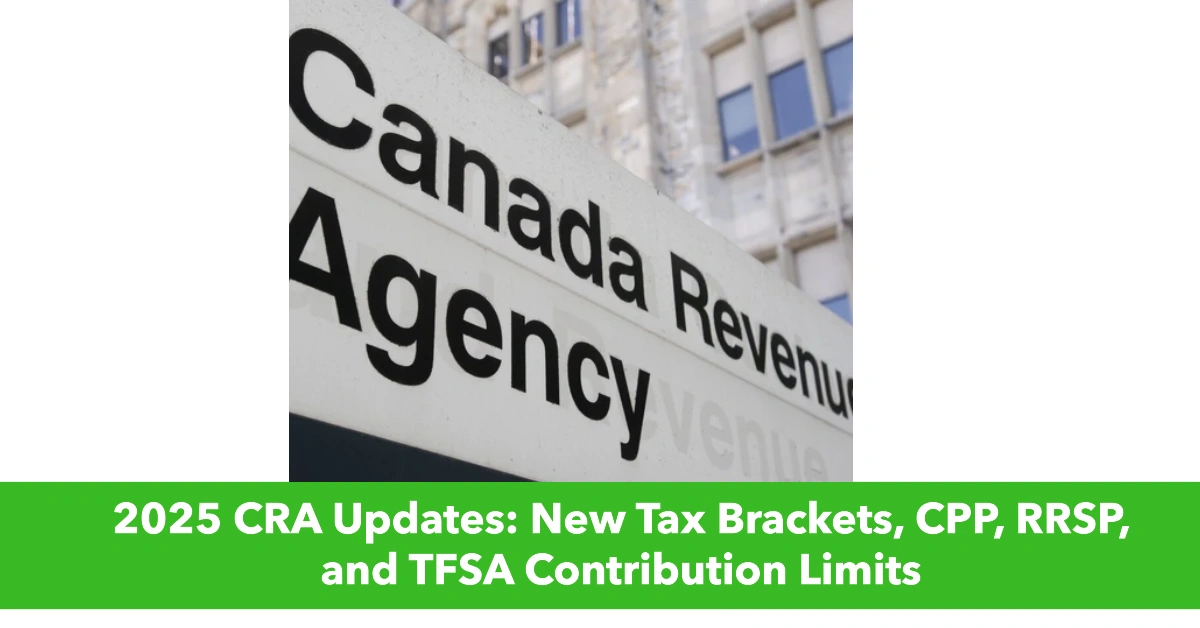Each year, most income tax and benefit amounts in Canada are indexed to inflation. For 2025, the Canada Revenue Agency (CRA) has announced an inflation adjustment factor of 2.7%. This is a significant decrease compared to last year’s 4.7%, reflecting the lower rate of inflation. These inflation adjustments apply to various tax brackets, contributions, and benefits, with some changes taking effect on January 1, 2025, and others, such as certain benefits, beginning on July 1, 2025.
2025 Tax Brackets
As part of the annual inflation adjustment, the federal income tax brackets for 2025 will be indexed to the 2.7% inflation rate. The updated tax brackets are as follows:
- Up to $57,375: 15%
- $57,375 to $114,750: 20.5%
- $114,750 to $177,882: 26%
- $177,882 to $253,414: 29%
- Over $253,414: 33%
In addition, each province in Canada will also adjust its own tax brackets based on their respective inflation factors.
Basic Personal Amount (BPA)
The Basic Personal Amount (BPA), which is the amount you can earn before paying federal tax, will increase to $16,129 for 2025, up from $15,000 in 2023. This change allows individuals to earn more income without paying federal income tax. The BPA provides a non-refundable tax credit worth $2,419, which is calculated at the lowest tax rate of 15%.
However, for higher-income earners, the BPA is gradually reduced starting at $177,882 and is fully phased out once income exceeds $253,414, aligning with the fourth and fifth tax brackets, respectively.
Canada Pension Plan (CPP) Contributions
For 2025, the Canada Pension Plan (CPP) contribution rates will remain at 5.95% for both employees and employers, while the maximum pensionable earnings (YMPE) will increase to $71,300. The basic exemption amount remains at $3,500, resulting in an increased maximum contribution of $4,034.10 for both employees and employers. Self-employed individuals will contribute at a rate of 11.9%, with a maximum contribution of $8,068.20.
In addition, starting in 2024, the second CPP contribution rate (for earnings above the first earnings ceiling) will apply. For 2025, earnings between $71,300 and $81,200 will be subject to this additional contribution rate of 4% for employees and employers, and 8% for self-employed individuals.
Employment Insurance (EI) Premiums
Employment insurance premiums will also rise slightly. The employee contribution rate will be 1.64%, with a maximum contribution of $1,077.48 on $65,700 of earnings. In Quebec, the rate will be slightly lower at 1.31%, with a maximum contribution of $860.67.
Tax-Free Savings Account (TFSA) Limit
The Tax-Free Savings Account (TFSA) contribution limit for 2025 will remain at $7,000, as the limit is adjusted based on inflation and rounded to the nearest $500 increment. This increase is a result of cumulative inflation adjustments over the years.
Registered Retirement Savings Plan (RRSP) Limit
For 2025, the RRSP contribution limit will rise to $32,490, up from $31,560 in 2024. Contributions are limited to 18% of earned income, including self-employment and rental income, up to the maximum limit.
Important Updates from the CRA for October 2024
OTB Notice from the CRA 2024: Key Details and What You Need to Know
ACFB Notice from CRA & Income Criteria 2024
CPP Investments: Balancing Net-Zero Goals with Billions in Oil and Gas Investments
Old Age Security (OAS)
For those receiving Old Age Security (OAS), the OAS repayment threshold will be $93,454 for 2025. If your taxable income exceeds this amount, your OAS payments will be reduced.
Prescribed Interest Rate
Finally, the prescribed interest rate for the first quarter of 2025 will decrease to 4%. This rate affects taxable benefits for employees and shareholders, low-interest loans, and related-party transactions. If the CRA owes you money, the interest rate will be 6%, which is two percentage points higher than the base rate.

